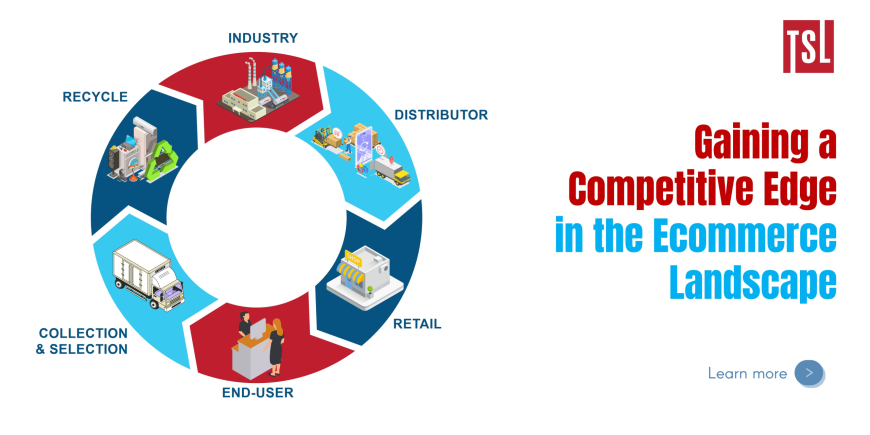Reserve Logistic: Gaining a Competitive Edge in the Ecommerce Landscape
Amidst the intense competition in Vietnam’s e-commerce sector, businesses must prioritize enhancing the customer experience, with particular emphasis on refining the delivery and return processes to increase their competitiveness. In fact, most customers now look at return policies even before buying a product. This highlights the increasing importance of a seamless returns procedure in attracting new business and retaining and satisfying current customers. It’s a critical aspect that businesses in the e-commerce industry must keenly observe and prioritize for success.
Reverse Logistics is the process of goods moving from the end user back to the seller or manufacturer. This process may include: returning wrongly-delivered items, returning excess inventory, exchanging damaged goods, reclaiming products for re-manufacturing, refurbishing, resale, etc. In e-commerce, reverse logistics is particularly crucial due to the high volume of returned goods.
Why ecommerce businesses should invest in reverse logistics?
A reverse logistics mechanism brings stability and steady flow to the supply chain of the business. A product’s delivery has been secured from a 360-degree POV which ensures that there’s no gap in fulfilling customers’ expectations. Moreover, it reduces costs, lowers risk, creates value, and completes the entire life cycle of a product.
Three key advantages of reverse logistics for e-commerce are as follows:
Enhance customer satisfaction: An efficient reverse logistics system simplifies the return process, boosting customer satisfaction by providing a hassle-free experience. This, in turn, contributes to increased sales and improved client retention for businesses.
Cost savings: Implementing an effective reverse logistics procedure allows businesses to reduce the expenses associated with processing returns.
Environmental sustainability: Returned items can be recycled, resold, or repurposed, promoting environmental conservation. Reusing returned items helps minimize pollution and aligns with sustainable practices.
Leverage reverse logistics to increase competitive advantage
a) Improving the reverse logistic process
Companies use reverse logistics to create customer loyalty, promote repeat business, and minimize losses linked to returns. Acquiring new customers is much more expensive and difficult than retaining existing customers.
In fact, market research shows that 95% of consumers are willing to make a repurchase decision if the previous experience is smooth and positive. Reverse Logistics is a key aspect of service lifecycle management (SLM) and assuring consumer satisfaction. Therefore, with better planning, management, and execution, reverse logistics will bring higher efficiency and profits to businesses.
Many companies are paying increased attention to reverse logistics to minimize the impact of massive returns becoming a cost center. Reverse logistics expenses are estimated to make up between 3% and 15% of an enterprise’s overall expenses on average. An organization can cut costs and resources devoted to managing exchange, returns, and return goods by improving the reverse logistics process.
Reverse Logistics can have a significant impact on a company’s performance—in ways that are both good and bad. For instance, goods return policies can make distributors and retailers order stocks more than they can sell, which can lead to a rise in inventory costs for manufacturers, while proper product disposal can bring down penalties due to non-compliance with environmental norms as well as create opportunities to recover more money on those goods.
b) Creating value from reverse logistics
Reverse Logistics also helps you create value by converting waste into sales and building strong customer trust. Moreover, effective Reverse Logistics keeps storage and distribution costs low.
The vast majority of goods returned are, undamaged, nondefective, or ready for reuse. Companies, today, experiment and innovate to bring new use cases for disposed of products with recovery, repair, and recycling. Therefore, the use of reverse logistics will help businesses create new value from old products, reduce the “carbon footprint” and, at the same time, improve brand image and customer loyalty. A seamless reverse logistics process ensures products can be salvaged and resold and creates a new opportunity via partnering with recycling specialists.
c) Optimizing Reverse logistics
Optimized Reverse Logistics offers financial benefits and impacts the holistic business environment positively. For Large ecommerce brands, a faster reverse logistics process will help build trust amongst customers as operating at a large scale allows them the comfort to absorb return-led charges and losses. Whereas for small e-retailers it can ensure minimal losses by bringing the product back on the inventory shelf quickly.
According to recent research in Inbound Logistics, up to 40% of online purchases in the past year were returned. Without a solid strategy for reverse logistics, it will be difficult for businesses to handle returns effectively. Therefore, e-commerce businesses should pay attention to their reverse logistics process to optimize operations and ensure customer satisfaction.
Source: VnExpress, India Times









